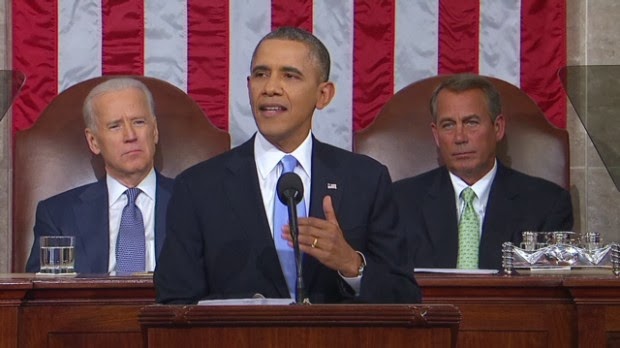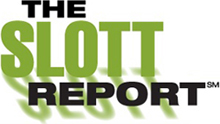 So, did anything happen in President Barack Obama's State of the Union last night that we should be aware of? The President's new retirement plan proposal, called myRA, (rhymes with "IRA" when pronounced correctly - trust us, it's tough) drummed up a lot of discussion over water coolers and across the worldwide web last night and into this morning, including extremely active discussions on Twitter.
So, did anything happen in President Barack Obama's State of the Union last night that we should be aware of? The President's new retirement plan proposal, called myRA, (rhymes with "IRA" when pronounced correctly - trust us, it's tough) drummed up a lot of discussion over water coolers and across the worldwide web last night and into this morning, including extremely active discussions on Twitter.
So what does the proposal mean for advisors, investors and the present and future of retirement planning? Our entire team of IRA Experts shares their initial thoughts on the proposal, including Jeffrey Levine's in an IRAtv video blog below (and at this link).
Ed Slott, America's IRA Expert: Bottom line - it's a good thing to start the ball rolling for those who take it seriously, but it won't be enough. People will still have to do more for themselves.
We don't have all the details yet - but assuming it can be done, it sounds like a good step to help people get retirement accounts started. I find that once an account is opened, it is more likely to be contributed to, and more likely to grow. Because of the protection of principal, (US Bonds) the growth will be modest at best, but it's better than nothing and it's better than losing money for those who need it most. It appears this would be a Roth-like account so that the funds grow tax free and can be withdrawn without tax or penalty if needed (but that could also be a deterrent - if it is used for purposes other than a retirement account). It can also be transferred to a Roth IRA.
As long as there is not too much of an administrative burden on small employers, this would be a great first step to help get a retirement account started for people who might not make the effort on their own. The account could also be started with small amounts of money each week or month. But in the end, it only works if people are diligent about saving and don't raid the account for everyday purchases. The employee needs to know that this is a valuable tax-free retirement account, not a source of extra cash for a big TV. The idea is good though, and I think it will help the people who are serious about saving for their retirement. But then again, anyone really serious always had the option to open a Roth IRA on their own. Maybe this will help them kick-start the process. We'll have to see. Still, there won't be enough accumulated for a serious retirement account, so other retirement savings would still be necessary to supplement this. That's my two cents.
Joe Cicchinelli, IRA Technical Consultant: I think the President’s proposed “myRA” (my Retirement Account) and Social Security are related issues. While we’re not experts on Social Security, most experts believe that if there is no legislative change enacted, Social Security will become insolvent sometime in the future. In all likelihood, either taxes will have to increase and/or benefits will have to be cut for Social Security to remain solvent. I think the President’s proposed retirement account might indirectly affect the long-range Social Security solvency problem by trying to deal with the relatively low savings rate in this country. Maybe his underlying theory is that if more people will save for their own retirement, then maybe they won’t rely on Social Security as much in their retirement years.
Certainly, because the funds in a myRA would be invested in government bonds, which historically yield moderate investment returns, the money wouldn’t grow that much over time and may not keep up with inflation. However, having said that, I’m generally for almost anything that would increase savings for retirement. We’ll see what happens to the proposed myRA in the coming months.
Beverly DeVeny, IRA Technical Consultant: We have seen the President’s desire to encourage Americans to save more for retirement in speeches from prior years (i.e. the autoIRA). In the past, his proposals always required some action on the part of Congress.
This time the President intends to create the myRA through a presidential executive order and bypass Congress altogether. What is a presidential executive order (EO), and can he do this?
EOs are issued under the President’s statutory or constitutional authority. They are issued to federal agencies, department heads or other federal employees and are treated the same as a law. They take effect 30 days after being published in the Federal Register. EOs cannot be used to authorize illegal activities. They bypass both Congress and the federal courts.
Can they be overturned? Presidents frequently amend or revoke an EO. Congress could pass a law to amend an EO, but the President could also veto that law. Thus, it is difficult for Congress to revoke or amend an EO. The Supreme Court has the authority to declare an EO to be unconstitutional and can revoke it.
Bottom line, it looks as though it would be possible for the President to get his myRA concept off the ground. We will have to wait and see how this all turns out.
Jeffrey Levine, IRA Technical Consultant:
The basics covered in IRAtv video on myRA:
Why is it structured this way?
- Aimed at those without company plans like 401(k)s
- Ineligible to contribute after $191,000 of income (married filing joint); $129,000 (single)
- Voluntary with low minimum initial deposit ($25) and low additions ($5)
- After $15,000 accumulated or same account 30 for years, funds must be rolled over
- White House indicates a Roth-like structure of no deduction for contribution, but tax-free later on
- Employer requirements unclear to this point
Most likely because it appears the President can do this, along with the Treasury, without Congressional action (as confirmed Wednesday afternoon by Treasury Secretary Jack Lew). President Obama had 6 retirement proposals in last year’s budget. None of them have materialized so far because most or all of them required Congressional action to implement. This appears not to require such action.
The myRA is not going to be enough on its own, but it can be a nice supplement to building a tax-free retirement account. It will also be a great way to encourage young or small savers because of the low minimums and the fact that the accounts are guaranteed. Starting early on is important because of the power of compounding and because of the mindset it puts you in.
The myRA might be able to be used as an emergency fund, similar to Roth IRA contributions. There would be no penalty or tax for early removal. However, people should only use these funds before retirement if absolutely necessary. If they go buy the latest video game system, a new car or some new clothes with the money, it’s not going to help. No special type of account can change that.
There’s always been two questions to answer: what type of account to save in and what to put in it? This account seems to blur that line.
The White House also released a fact sheet from The State of the Union address and had this to say about the proposed retirement plan.
Creating “myRA” - A New Starter Savings Account to Help Millions Save for Retirement. The President will take executive action to create a simple, safe and affordable “starter” retirement savings account available through employers to help millions of Americans save for retirement. This savings account would be offered through a familiar Roth IRA account and, like savings bonds, would be backed by the U.S. government.Articles of Interest:
Here are two articles of interest that give a good explanation of the initial proposal (you need to be a Wall Street Journal subscriber to read the second article):
Will Obama's 'myRA' plan take off? from MarketWatch
Obama announces new retirement accounts
Now, we mentioned the electric Twitter discussions that took place right after the President's announced proposal last night. Below, we share a selection that includes some of the best analysis from financial advisors, thought leaders and financial media members.
Make sure to keep a close eye on www.theslottreport.com, as we will have more information on this proposal as it becomes available.
#MyRA investment will be G-Fund like that offered in government worker's TSP plan. Principal guaranteed; ROR is avg of 4-30 Treasury bonds.
— Robert Powell (@RJPIII) January 29, 2014#MyRA offered through payroll deduction at first, but maybe other ways later.
— Robert Powell (@RJPIII) January 29, 2014#MyRA = pretty good savings account. Liquidity, principal guaranteed, gov't bond returns, & no penalty to withdraw your $
— Robert Powell (@RJPIII) January 29, 2014@RJPIII Only ?: Will workers do it? If they didn't sign up to buy savings bonds or I-bonds what will motivate them to contribute to #MyRA?
— Robert Powell (@RJPIII) January 29, 2014After 30 years or $15,000 the #MyRA would have to be rolled over to a Roth IRA.
— Jeffrey Levine, CPA (@IRAGuru4EdSlott) January 29, 2014Lew says MyRA easy to start: $25 to open. $5 min per deposit withdrawn from each paycheck.
— Mark Knoller (@markknoller) January 29, 2014Interested 2 see how this competes with ideas percolating in the states - Nine Things to Know About Obama’s myRA http://t.co/gHfCb1Xxik
— Mark Miller (@RetireRevised) January 29, 2014Most details I've seen yet. Kudos @AnneTergesen. "Obama Announces New #myRA Retirement Accounts" http://t.co/fFQ66MoZO8
— MichaelKitces (@MichaelKitces) January 29, 2014.@CarolynMcC #MyRA basically appears to be a form of IRA where the default investment option is government savings bond. Think IRA + I-Bond.
— MichaelKitces (@MichaelKitces) January 29, 2014Okay - this MyRA promises a decent return. I look forward to seeing what a decent return is. #SOTU
— Carolyn McClanahan (@CarolynMcC) January 29, 2014Obama’s going to announce a new myRA savings plan. Very modest in scope, but could grow into something interesting over time.
— Matt Yglesias (@mattyglesias) January 29, 2014Support so far for #myRA concept from Investment Company Institute @WhatsNewAtICI, Putnam @PutnamToday and BlackRock @blackrock.
— Kelly Greene (@KellyGreeneWSJ) January 29, 2014@theslottreport #SmallBusiness hasn't been eager to take on administrative costs related to past "automatic IRA" proposals #myRA #SOTU
— Gail MarksJarvis (@gailmarksjarvis) January 29, 2014@theslottreport #MyRA sounds like a gimmick. Congress needs to mandate universal #IRA be offered to for workers without #401ks. #SOTU
— Janet Novack (@janetnovack) January 29, 2014Policy merits aside let's all agree that the term "MyRA" is an abomination.
— Dylan Matthews (@dylanmatt) January 29, 2014








2 comments:
Why not just adjust rules for existing IRAs instead of creating yet another new program? IRAs can invest in government bonds. This looks like a trick to get everyone to put money into the government. They have taken the Social Security and now they want to get their hands on the rest!
Since the money will be taken from earned income, they will be able to roll into a Roth IRA, but only until April 15 of the following year, not 30 yeears or $1500 later. And if they do not roll it yearly into a Roth, they will be taxed when they cash in those government bonds. To avoid those two limits will require Congressional action.
Post a Comment